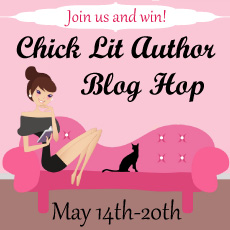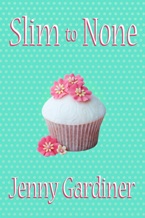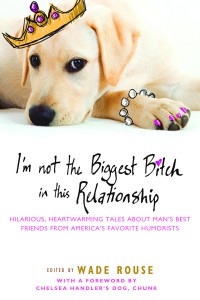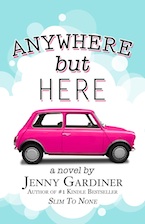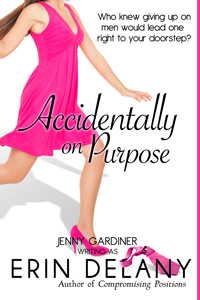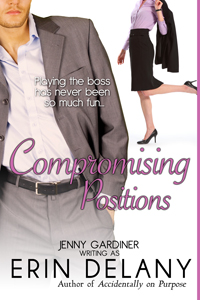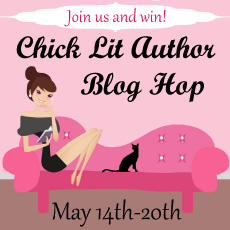Chick Lit: It Really Isn't Rat Poison After All!
“Chick lit” is a term that started out as a catch-all phrase used to describe lighthearted, sort of “fluff”, dare I say even mindless, books about women, for women. While it originated as a clever term it quickly became a derogatory one, used with a sniff as if one needed to plug ones nose when referring to it. The literary crowd, women in particular, loved to take powerful swipes at writers of chick lit, contending that such writers aren’t actually writers at all, but rather purveyors of schlock meant to dumb down women even more (to which I would reply, “No, that’s any book by Snooki.”)
The first chick lit novel I stumbled upon years ago I think was Bridget Jones’ Diary, which was an original and hilarious take on the life of a going-nowhere-fast twenty-something in London. Much of what drove the popularity of Bridget Jones’ Diary was the voice of the author. And voice, frankly, is what made the genre work. And lack thereof contributed strongly in its rapid demise.
That and an industry bent on greedily capitalizing on the popularity by publishing gobs and gobs of inferior books pawned off as chick lit but really just poorly-written, boringly-told poseurs. These books all exploited the original concept, and turned it into generic drivel: single-girl-in-the-city-with-crap-job-loads-of-credit-card-debt-cad-of-a-boyfriend-who-invariably-dumps-and-humiliates-her-and-sage-gay-male-best-friend-who-dope-slaps-her-into-reality-and-enables-her-to-recognize-the-real-white-knight-on-the-horse-when-he-gallops-up-to-her-doorstep-and-saves-her.
Back when chick lit first surfaced, you couldn’t get much of it here in the States. I used to order books from Amazon.co.uk, which got pretty costly when transatlantic shipping was added into the mix. Not to mention the lengthy delivery times too forever. So I was pretty happy at first when American publishing houses started putting out chick lit, starting with the now-ubiquitous Jen Weiner, one of maybe three authors allowed by New York publishing houses to actually still publish books that could be accused of donning the mantle of chick lit; every other author who wrote anything that smacked even narrowly of chick lit fell victim to the fact that the industry glutted the market with crap, and so readers turned en masse away from the genre. And the industry response naturally was that “oh, then only three authors can write and sell these books!” Rather than realizing that had they screwed things up royally and that perhaps they could fix it by offering up actual books of substance within the genre. Instead, chick lit became Voldemort: “she who shall not be named” within the industry.
Now I know my attitude about this genre is likely to be viewed as subversive by industry insiders. And likely so by the three authors anointed as the only industry-approved standard bearers allowed to publish books with strong first person voices, a hallmark of chick lit back in the day. It was frustrating to a generation of authors that the drawbridge leading to the castle had been shut tight, the moat secured with guards (i.e. editors) prepared to dump vats of boiling oil on interlopers who would dare attempt to publish a book that might be accused of being a — horror of horrors! — chick lit novel. Instead many authors I knew eventually stopped writing women’s fiction altogether and instead turned toward young adult fiction, because that market was burgeoning and it seems even if plenty of YA books were lackluster at best (as had been the case with the chick lit mania), for some reason there was a ceaseless demand for more of the genre, regardless. Ah, I’ve often bemoaned the shoulda coulda woulda in that regard: had I been in touch with my inner teen angst, I, too, could’ve made a killing writing dystopian, vampire-drenched novels targeted at teens in perpetual need of further edginess in their reading material. But alas, I wasn’t.
The funny thing is I have long been drawn to first person narrative, and it had nothing to do with chick lit. My first exposure to first person likely came with JD Salinger’s Catcher in the Rye, or maybe it was Gene Shepherds fabulous In God We Trust, All Others Pay Cash, or maybe it was in a few of James Joyce’s stories in Dubliners. I always find it ironic that the publishing industry shunned first person writing across the board with little exception for women writing books for women about women, but it seemed to have worked well for some of the masters of the 20th century. Go figure. Which brings me to that double standard regarding the chick lit genre. We like to call it the Dick Lit dilemma.
You see, authors like Nick Hornby have written stories about young adult slacker men frozen in their inability to grow as human beings (the male version of the crap-job-lousy-fill-in-the-blank-going-nowhere-fast-life, though usually with a woman at the helm to ultimately kick their butt and set them straight), really the male version of chick lit, and the attitude of the publishing industry toward men writing dick lit has been “bring it on.” While overtly shunning women authors writing pretty much anything shy of literary fiction or genre fiction such as romance, mystery or crime novels. Because, god forbid, the book might be perceived as chick lit, and don’t forget, no one buys chick lit unless written by one of three sanctioned authors. Naturally because they’re the only ones who actually succeeded in publishing chick lit books. But never mind that.
At first women authors initially had to rename whatever it was they were writing and trying to sell to New York houses as “women’s fiction,” but then the industry got sly to that tagline, and then it had to be even more cloaked in disguise. I picture a manuscript wearing a Groucho Marx nose and glasses in a lame attempt to sneak into the party.
Because there was a party there, just no one but three authors were invited to attend and swill the free-flowing expensive champagne. And those authors somehow found their audience again and again with their novels (natch, as they were the only ones whose books made it to the marketplace!). While everyone else had to make a rapid u-turn and start writing other types of books instead (or take a job working at Taco Bell), because the gatekeepers, i.e. the publishing industry, were standing around the moat with those vats of boiling oil. All the while, readers who thought that no one wrote chick lit anymore (but for those three authors) just continued to await any new release by the Chosen Three, buying a book or two a year, tops. And no doubt eventually walking away from chick lit to find authors in other genres because the pickings were so slim in chick lit-slash-women’s fiction-slash-anything written for women that wasn’t literary or didn’t refer to Jane Austen in the title (which is a guaranteed sale to New York). Tail wagging the dog, perhaps? Had the genre not been diluted down to a sewage pit in a Mumbai slum by the industry, mayhaps these readers could have had a much deeper selection of women’s fiction novels from which to draw for their chosen reading material.
But then one day Amazon came along, and changed all that. Because they made possible the impossible: they enabled authors to go directly to their readers. And provide books that readers have been interested in finding. But couldn’t. And guess what? To borrow from Sally Field’s somewhat embarrassing Academy Award acceptance speech of about a hundred years ago…authors learned “They like us! They really like us!” Turns out they thought we’d all stopped writing or something, when nothing could have been further from the truth. The beauty of the digital era in reading and the internet in general is the populist revolution has occurred: all of us have learned that the middle man, while sometimes providing a useful service, has often only served as a detriment.
Sure, now readers have to be perhaps even more vigilant because there is a lot more schlock available for sale in the book world than ever before. Every Tom, Dick and Harry (or should that be Tammy, Dana and Sally?) thinks they should publish a novel, and frankly, maybe some of them ought not quit their day jobs. But the great thing is a) the books are cheaper, and so maybe you lose out $2.99 on a lousy book, versus in the Gilded Age of publishing’s chick lit (which lasted for all of 6 months), you were out $10-$15 on a lousy book; b) you can read a sample for free to be sure you want to shell out the money, and 3) hey, back then most of what you bought that actually had filtered through those gatekeepers was ghastly bad anyhow — we could only go up from there!
So the moral to the story is this: yay. Writers have some great choices these days. And readers have some great choices, too. And all those books that were collecting dust in writers laptops are finally finding their audience, which is all good for everyone!
Thanks for indulging me in my vent. It’s always fun to moan and complain a bit. More fun to explain to you why you haven’t been able to find these books. And now you can! I hope you can check out some of the authors on this blog hop and maybe find a new favorite.
Here’s how the blog hop will work . . .
- Each of the 34 participating authors has written a special Chick Lit-centric piece and these posts will go live on Monday, May 14th. At each blog hop stop, you will have the opportunity to enter to win a FREE Chick Lit e-book from that particular blog’s owner/author. All you have to do is leave a comment on the blog post, including your name and e-mail address, and you’re automatically entered to win. If you visit each blog hop stop, that means you have the chance to win 34 different e-books!
- The blog hop will start at Natalie Aaron & Marla Schwartz and end at Jen Tucker. You will find a list of all the stops on the blog hop at each auther’s blog. Authors’ blogs will be listed in alphabetical order according to last name.
- In each of the author’s blog posts, there will be a “secret word.” This word will be italicized, so it will be easy to find. All you have to do is make note of this secret word at each blog hop stop. Collect all 34 secret words and submit your list to CLABlogHop@aol.com before midnight on Sunday, May 20th and you will be entered into the Grand Prize Drawing! The winner of this drawing will receive a$150 Sephora gift card! $150 to spend on make-up, fragrance, bath and body goodies, skin care, and hair products! How fun is that? This gift card can be redeemed online, or at any Sephora store in the US.
- Winners of each of the participating author’s e-books, as well as the Grand Prize winner of the $150 Sephora gift card will be announced on Monday, May 21st.
- Contests are open to citizens of the United States only.We hope you’ll join us for this exciting event! Don’t forget to tell all of your Chick Lit-loving friends! The more, the merrier!
- To be eligible to win a copy of Slim to None on my blog, please be sure to leave a comment on my blog, and I will choose from those entrants
- here’s the link to the authors:
Powered by Linky Tools
Click here to enter your link and view this Linky Tools list…
(ps: apologies for my book covers being cut off. My blog has just upgraded and with it totally messed with how to upload images and I have no idea how to fix it so it cuts off my covers…Good thing I’m a writer and not a computer programmer…)




